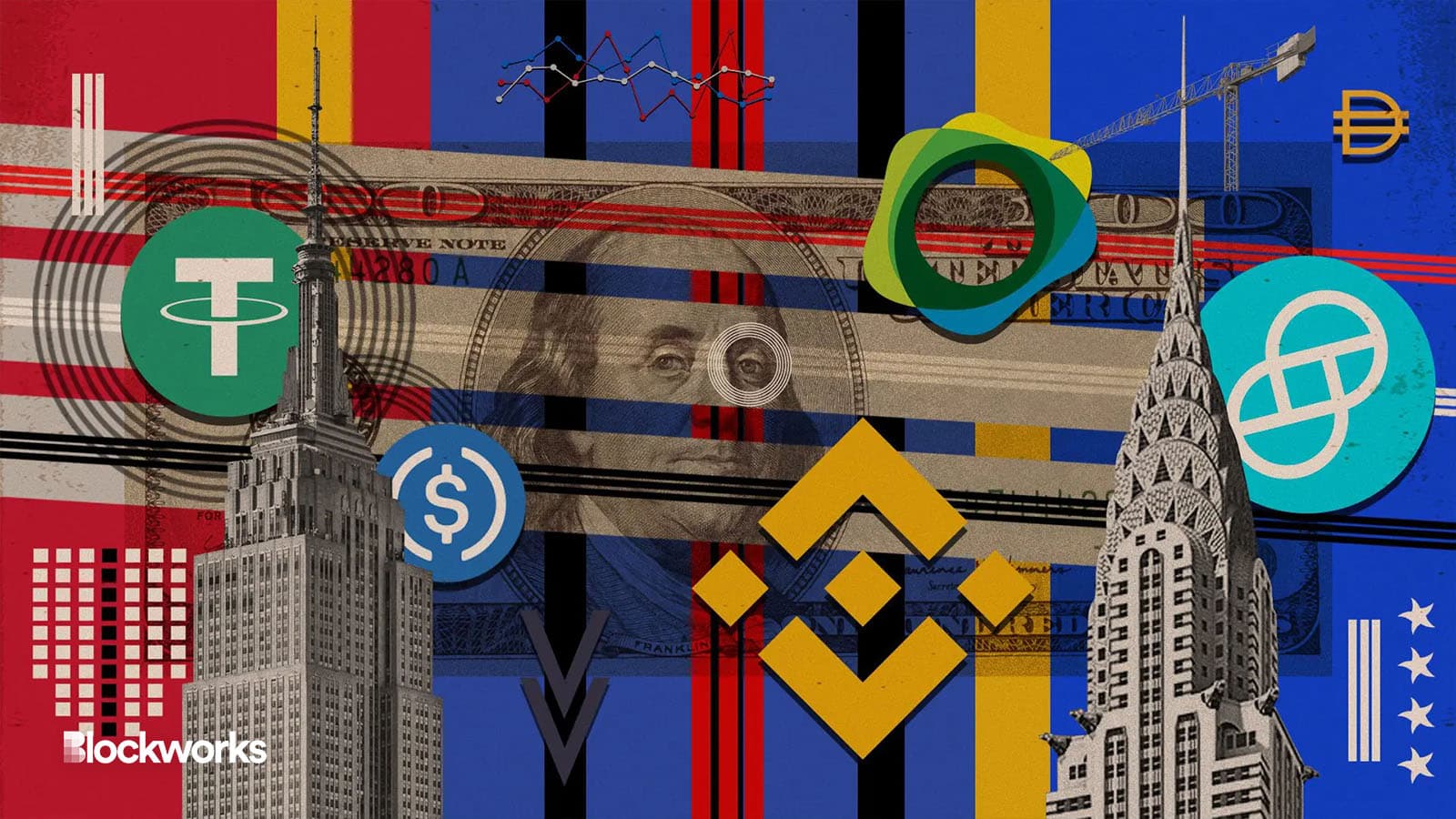How Hard is it for Stablecoin Issuers To Cash Out Billions?
US government debt is considered as highly liquid assets leaving little doubt about Paxos’ ability to meet an influx of redemptions on BUSD, analysts say

Blockworks Exclusive Art by Axel Rangel
Stablecoin issuer Paxos Trust, under pressure from US regulators, must be able to honor potentially billions in redemptions in the year ahead.
That raises questions about whether the firm — and, for that matter, other issuers — can meet such large requests from users seeking to pull their money from crypto ecosystems without a hitch.
Paxos announced on Feb. 13 that it was halting its minting of BUSD, the Binance-branded stablecoin, amid allegations it violated investor protection laws.
The company received a Wells Notice from the US Securities and Exchange Commission and had been ordered to cease minting new BUSD by the New York Department of Financial Services.
Industry insiders are concerned about the SEC’s lack of clarity on Paxos’ stablecoins and similar USD-based digital coins, Jeff Yew, founder of digital asset manager Monochrome told Blockworks.
“This uncertainty to holders and businesses who rely on such products will need to be addressed eventually,” Yew said.
Paxos did not immediately respond to a request for comment, but its CEO, Charles Cascarilla, in an email sent to employees last week, said the decision to end the firm’s relationship with Binance was made because it “no longer aligns with our current strategic priorities,” and “was separate from the Wells Notice and the DFS directive.”
Since 2019, Paxos has been responsible for the issuance and redemption of BUSD through a license agreement with Binance. Paxos has confirmed that it will continue to fully support BUSD and offer redemption options to its customers until at least February 2024.
Stablecoins issued under Paxos’ own brand remain unaffected, a spokesperson previously confirmed to Blockworks.
In BUSD’s case, there does not seem to be any technical barrier to redeeming USD, Yew added, although the process and hurdles of stablecoin redemption often lead to holders choosing to swap their holdings into another stablecoin.
Binance CEO Changpeng Zhao the CEO expressed on Twitter his anticipation of users transitioning away from BUSD to alternative stablecoins on the exchange platform “over time.”
Latest attestation figures
According to Paxos’s Feb. 21 attestation, BUSD had a total token outstanding of $12.43 billion, with a weighted average maturity of 3 days. The stablecoin is backed by a range of US Treasury Bills and US Treasury Debt, totaling $12.66 billion in current market value.
William Fong, Treasurer at Australian trading firm Zerocap told Blockworks obtaining the necessary liquidity to meet redemption obligations is comparable to how central banks handle the fluctuating exchange rate of their foreign currency reserves.
“That means if there is more outflow to the domestic currency versus a foreign currency, or if the economy runs a large current account and trade deficit, there is pressure for investors to sell the ‘stablecoin’ and buy ‘USD,’” Fong said.
When participants buy stablecoins, they expect to be able to sell them back for the same amount of money later on. Sometimes, individuals want to sell more stablecoins than there are buyers for.
This can happen if people start to lose faith in the asset, or if they need to use their money for something else entirely. In that instance, the stablecoin issuer needs to come up with enough money to buy back all the coins that people want to sell.
Issuers typically do this by offloading some of the assets that they have in reserves, like government bonds or cash.
The fixed-income market is worth roughly $120 trillion, which means secondary liquidity is more than enough to meet the stablecoin realization requirements, even on short notice, Fong said.
Zhong Yang Chan, head of research at CoinGecko agreed.
“T-bills are very liquid instruments. Paxos could just sell those T-bills in the market.”
Rival stablecoin issuer Tether made its decision to eliminate commercial paper from its stablecoin reserves, replacing them entirely with US Treasury bills last year, in a bid to boost transparency and the security around users’ funds.
US Treasury securities record an average daily volume of around $615 billion, according to the Securities Industry and Financial Markets Association.
Trouble starts when issuers have mostly risky or illiquid assets backing up the stablecoin, the analysts said. It can be hard for issuers to get enough money to buy back all the stablecoins people want to sell.
That could eventually cause the value of a given stablecoin to drop, forcing certain issuers to take a haircut to meet daily redemptions.
Thus, the prevailing consensus around reserves has evolved, shifting away from a basket of riskier assets to those considered more stable.
Get the news in your inbox. Explore Blockworks newsletters:
- The Breakdown: Decoding crypto and the markets. Daily.
- 0xResearch: Alpha in your inbox. Think like an analyst.






